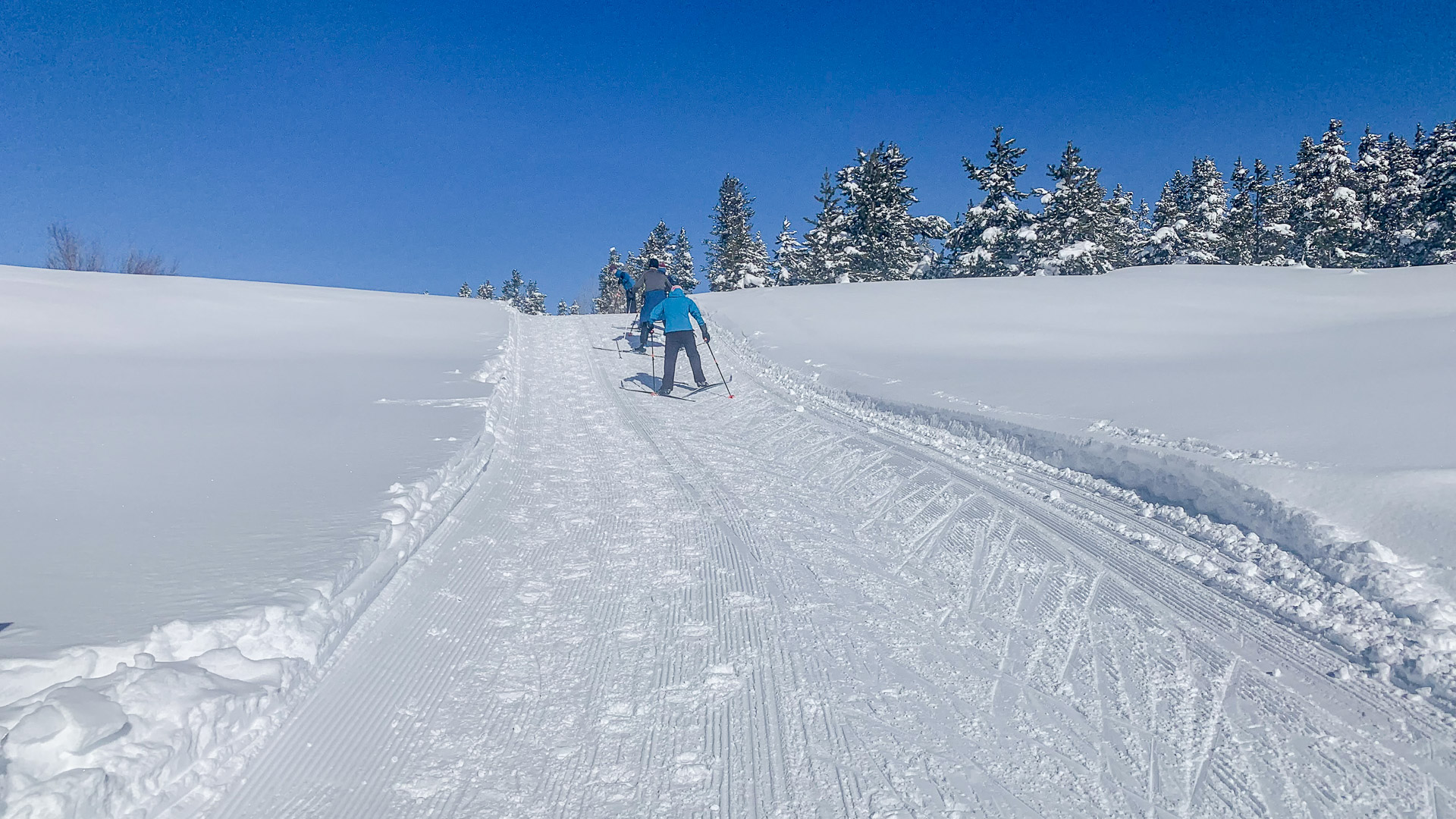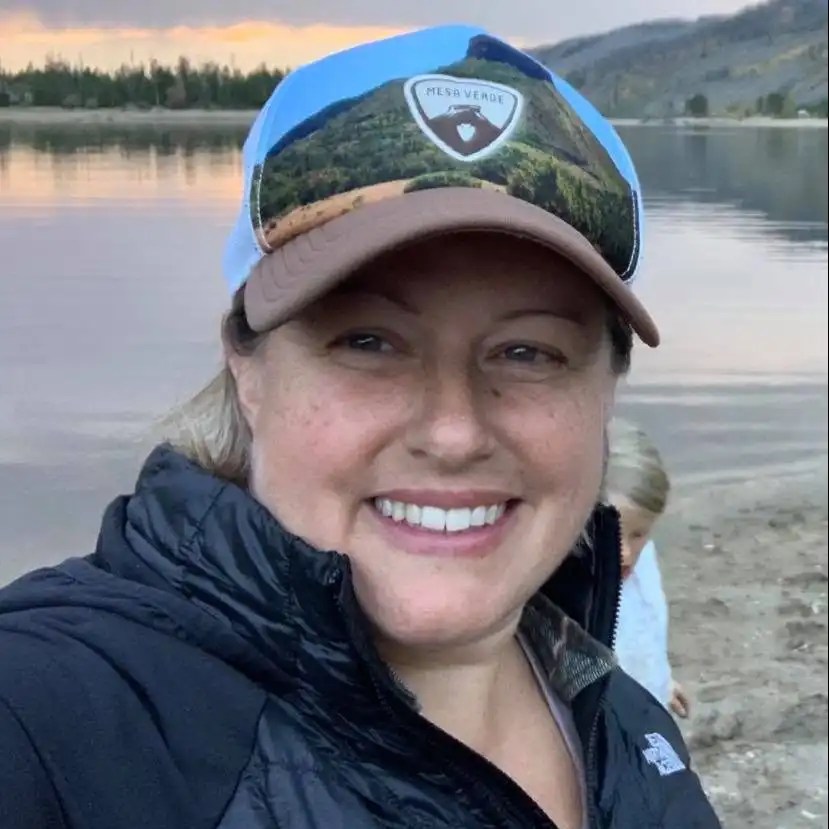
Nordic skiing offers a great opportunity for winter recreation that provides a full-body workout, both physically and mentally. Some skiers prefer to stride forward on skis in the classic style. Some may prefer to glide side to side to skate ski. Whatever style you choose, these seven tips will help you have a successful first outing.

Head To A Nordic Center
The best place to get in those beginner ski tracks is at a Nordic center, especially when you are just starting. Nordic centers have trails rated by ability, and the trails will be maintained. You can pick up quick tips by watching the locals or listening to the staff talk about technique and more. Nordic centers offer day passes, punch cards and yearly memberships if you and/or your family enjoy the sport. Private lessons and group lessons are also available. “Though there are many towns that offer free trails, sometimes heading to a Nordic center is the best when you are first learning,” said Liz Stephen, three-time cross-country skiing Olympian. “The grooming will be more consistent and usually better quality, which helps when you are first getting your feet under you. Plus, they usually have rental gear and instructors who can help you get started.”

Get Outfitted
To enjoy your first Nordic skiing adventures, you need to have the right equipment. Don’t borrow equipment from friends. Take the time to get fitted at a rental place like REI or at a Nordic center or ski shop. Nordic boots are similar to ski and shoe boot sizes. Nordic ski lengths vary by height, ability level and type of skiing. Weight may also be a factor considered in ski length. If you don’t have retractable hiking or ski poles, you may want to ask for those when you rent. Poles will help with stability, especially on uphill and downhill sections. “This has been hard the last two years with supply chains being so wonky,” said Stephen. “However, opting for used gear is never a bad thing. Remember that every boot fits slightly differently, so if one brand doesn’t feel good, try another. The same is true for skis, so sometimes renting a few different setups first is a good way to learn what you like before you spend the money.”
As with most outdoor activities, you will want to dress in layers when Nordic skiing. Trails will go in and out of the trees, so sun exposure will vary. Weather can also change quickly when you are out on skis. Since your full body will be moving, you will get warm quickly while working so hard. Moisture-wicking clothes are the best choice to keep you dry and warm. Have a base layer, mid layer and outer layer that you can take on and off based on the weather conditions. A water-resistant/waterproof outer layer is best for keeping you dry, especially during those first adventures where you are almost guaranteed to fall.
Lastly, don’t forget to cover your extremities, including your head and your hands, where you lose the most heat. Choose waterproof gloves as well for those times you need to put your hands down on the snow.

Take A Lesson
The best way to see quick growth with Nordic skiing is to take some lessons.
Technique is such an important component to enjoying the sport and staying safe. Whether cross-country skiing or skate skiing, different techniques help you tackle the terrain while heading uphill, downhill or on the flats. Pole placement, width of the skis and glide length are just some of the critical mechanics that ski instructors can help you understand and improve on. “Taking a lesson or joining a ski group is such a huge tool for success,” recommended Stephen. “The better the teacher, the better the experience and the quicker you will pick it up, so if you don’t have a good experience with your first lesson, try a new instructor or a new venue to learn.”

Use Proper Ski Etiquette
There are rules and etiquette to follow while out Nordic skiing that not only keep everyone safe, but help maintain the trail system. If you are at a Nordic center or developed trail system, there will be trail maps and signs along each route to guide your way. Be sure to follow these signs to help preserve the tracks and to make sure you are on a trail you can tackle ability-wise. “The best rule here is to just be kind,” said Stephen.
One of the biggest rules to understand is who has the right of way on trails. Trails may be one way or two ways. Be sure to follow the arrows/signs and go the correct direction on one-way routes. On two-way trails, uphill skiers have the right of way. You must yield to them. Other etiquette is to move over to the right for faster skiers to pass you safely. “In general, the unwritten rule is that the better skier should yield to the less experienced skiers,” stated Stephen. “That does not always happen, so keep your eyes out!”
Help maintain the tracks for future users by avoiding walking through tracks. Part of trail fees goes to track and trail maintenance. There are tracks specifically for cross-country skiers, skate skiers and snowshoers. Stay within your track area. If you fall, try to fix any trail damage you may have caused.
Each area will have designated rules in place, including hours of operation, fees, what trails are open and more. Always have your eyes and ears open.
Follow the rules to make sure that you enjoy your experience on the trail.

Start Easy
While the professionals and/or experienced skiers make it look easy, Nordic skiing is much harder than it looks. Begin on green, or easy-rated, trails. These trails lack climbs, steeper downhills and other hazards that newer skiers don’t have the technique to navigate safely. “This is probably the hardest thing to accomplish in cross-country skiing when you first start,” said Stephen. “The technique is such a challenging part of the sport that until you get comfortable on skis, there is no recovery phase. Don’t get discouraged, as it is a steep learning curve for everyone, and if you just put the time in day by day, you will see big improvements.” Nordic skiing requires the whole body, so stick to a short day on the snow for the first few times as your body gets used to the work and your technique and endurance improve.

Be Prepared
While Nordic center trails won’t take you too far away from civilization, you still need to be prepared. Dress in layers, carry water and bring snacks that will help you keep your energy levels up.
Having some kind of navigation device or a cellphone is important in case you need help. Sunscreen is a must as the sun is much more intense when it reflects off snow. “Sunglasses are a must for Nordic skiing,” said Stephen. “Not only is the snow highly reflective, even on cloudy days, it is also important to protect your eyes from falling snow and other people’s poles. Goggles are not a good option as they don’t allow the passage of air between your perspiring skin and the lens, so opt for a pair of full-coverage, quality sunglasses instead.” It is also a smart idea to have snacks, water and extra clothes in the car for the drive home.
Check the weather and snow conditions before you head out. It is your responsibility to know the dangers before heading out and to be prepared for changing conditions. Check Avalanche.org for the latest conditions and avalanche danger ratings, as some trails may be located in avalanche territory.

Grab A Friend
Experience a whole new form of winter recreation with a friend in tow. Hit the trails with a companion for a day of fun. “Nordic skiing is so much more fun with a buddy or a group to feel silly with,” said Stephen. “When you are learning a new sport or skill, it is always helpful to have friends to help get you out the door, laugh with you when you fall down and help you get back up when you need it.”





